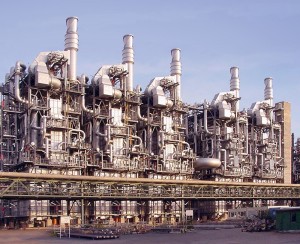Low cost and abundant ethane from gas production and processing has been a boon for ethylene producers in the Middle East and the U.S. However, refinery naphtha and it’s direct link to the price of oil is giving older naphtha based European steam crackers effective pricing power to compete with ethane based steam crackers in the Middle East and elsewhere.
The availability of low cost ethane, valued at about 55 cents per gallon on the U.S. Gulf Coast as of mid-March, was the compelling reason for six new ethane based steam crackers under construction that will make the U.S. the world’s largest ethylene producer by 2018.
At the Argus DeWitt Petrochemical Conference in Houston (March 15), Andy Nicholson, V.P. petrochemicals market development, Argus DeWitt, noted that up until recently naphtha based steam cracking was much more costly than ethane based steam cracking (to ethylene), by a factor of seven (7). However, the cost factor of “7” has recently declined to a cost factor of only “2.” Taking into account higher co-product yields from naphtha steam cracking vs ethane steam cracking, Nicholson explained that reduced naphtha prices are why effective operating rates are over 90% for European steam crackers, most of which are well over 25 years old. Some of these units, such as Total’s steam cracker in Antwerp, have undergone revamps to better integrate with the company’s refinery operations.
Aside from the overabundance of shale based ethane in the U.S., Anu Agarwal, Argus DeWitt, V.P. chemicals, Asia, Argus, noted that “the Middle East is running out of ethane.” The ethane feedstock advantage was originally why Saudi Arabia, for example, emerged as the lowest cost ethylene producer in the world. With Middle East ethane prices escalating as production decreases, Agarwal said, “there are fewer ethane based steam cracking projects in the Middle East, so future ethylene steam cracking projects will have to realize integration benefits with refinery feedstocks (i.e., naphtha).”
Aside from the naphtha feedstock advantage benefiting European steam crackers, Agarwal pointed out that in addition to the increasing availability of naphtha feedstock, 30% to 35% of European cracker feedstock is currently based on LPG. Agarwal said, “much of the incremental LPG coming from the U.S. gives Europe an advantage in terms of freight (vs. U.S. LPG shipments to Asia).
According to recently released information from Platts Analytics, Approximately 62% of the ethylene produced in Saudi Arabia is from ethane, followed by 25% from propane, 10.8% from naphtha, and 1.4% from butane. The Platts Analytics report noted that by 2024, the percent of ethylene produced from naphtha will increase to 17%.
Agarwal also commented on the ONGC Petro Additions Limited (OPaL) integrated refinery and petrochemical complex under construction in Dahej in the Indian state of Gujarat, that will include a dual feed steam cracker unit (DFCU) and associated units with a capacity to produce 1.1 million tons of ethylene and 400,000 tons of propylene annually. Agarwal noted that the OPaL DFCU will include a combined ethane and naphtha feedstock capability, while also pointing out that the new Reliance Industries Ltd (RIL) steam cracker in India will use refinery offgas as feedstock.








Leave a Reply
You must be logged in to post a comment.